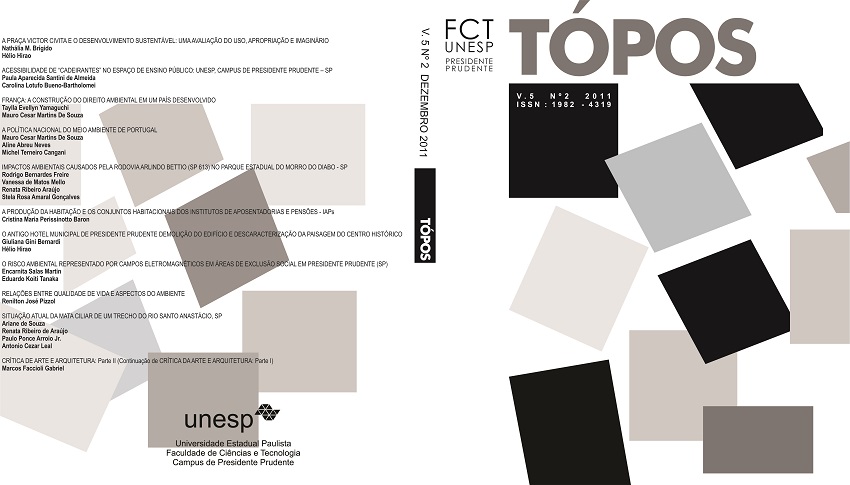SITUAÇÃO ATUAL DA MATA CILIAR DE UM TRECHO DO RIO SANTO ANASTÁCIO, SP
Resumo
O presente trabalho trata do levantamento florístico qualitativo realizado na área de preservação permanente do canal principal do Rio Santo Anastácio, à montante do manancial que abastece cerca de 30% da população de Presidente Prudente, São Paulo, que vem sofrendo diversos impactos decorrentes de atividades agropecuárias e pela expansão urbana. Para a realização do estudo, foi utilizado o método do caminhamento, sendo amostrados os indivíduos com diâmetro à altura do peito igual ou superior a 5 cm. Os indivíduos identificados se dividiram em 47 espécies e 22 famílias. Mimosaceae foi a família com maior número de espécies, seguida de Myrtaceae. Como resultado, verificou-se a fragmentação da mata ciliar devido à supressão da vegetação, a presença de espécies exóticas e a antropização da bacia, diminuindo a capacidade de regeneração natural da mata ciliar. Assim, propõem-se maiores estudos para o reflorestamento da área e a proteção do manancial.
Palavras-chave: levantamento florístico, mata ciliar, Rio Santo Anastácio
Abstract
The present paper is about a qualitative floristic survey carried out in the area of permanent preservation of the main canal of Santo Anastácio River, in Presidente Prudente – São Paulo, that is suffering from several impacts as a result of urban expansion. To perform this study, a selective walking method was used, where all the individuals were sampled (Diameter Breast Height = 5 cm). The identified individuals were divided into 47 species and 22 families. Mimosaceae was the family with the highest number of species, followed by Myrtaceae. As a result of this, the fragmentation of the forest, extinction of vegetation, the presence of exotic species, and the inappropriate use of the basin were observed, reducing the capacity of natural regeneration of the river. Therefore, greater reforestation studies of the area are proposed.
Keywords: floristic survey, Forest reserves, Santo Anastácio River

